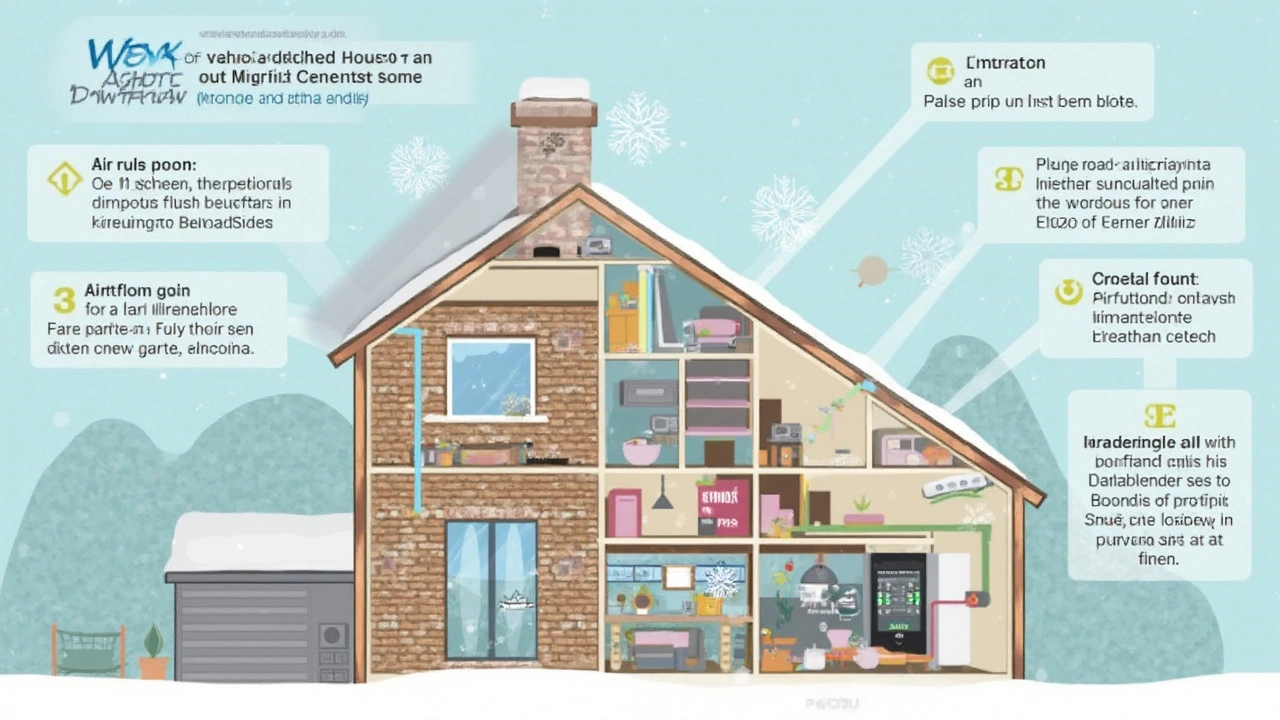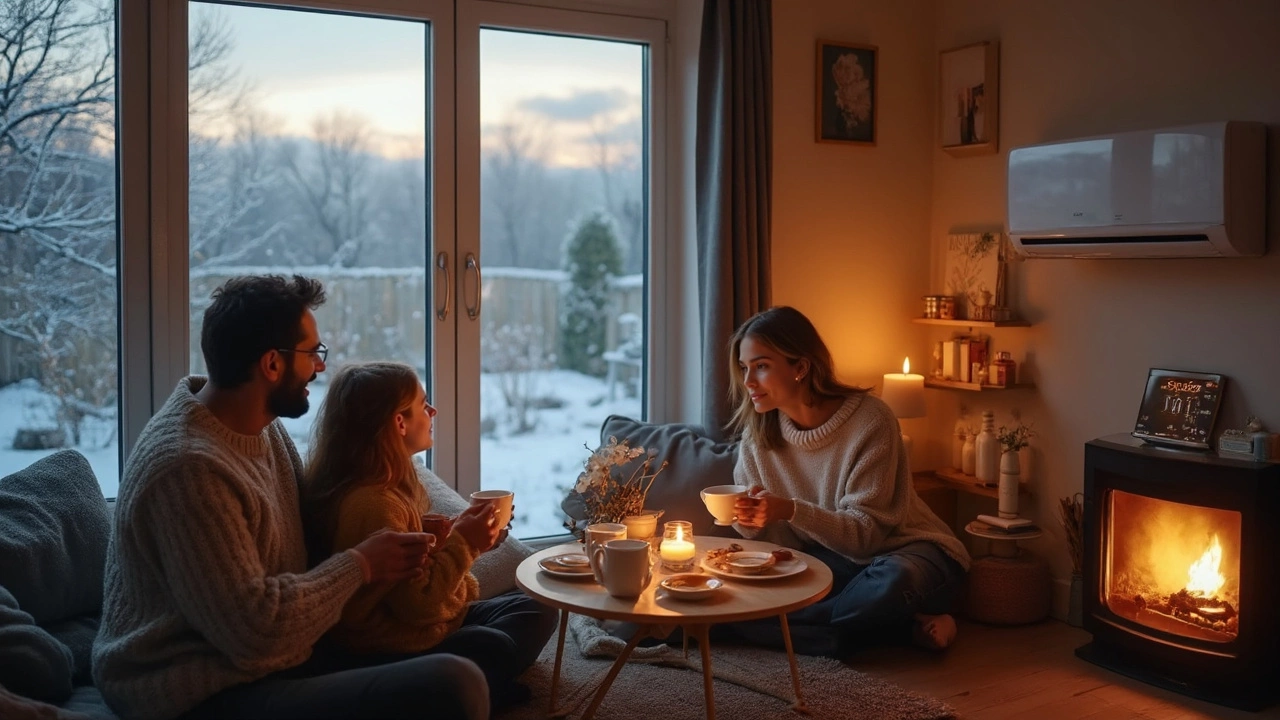Ever noticed your heat pump making strange noises or running more often when it’s freezing outside? That’s not your imagination—it’s actually working twice as hard. Heat pumps shine when the temperature is cool but not bitterly cold. As the mercury drops, grabbing heat from the air gets trickier, causing the system to eat up more energy just to keep you warm.
You might have heard folks ask, “At what temperature do heat pumps just not cut it anymore?” That magic number is usually right around 25°F to 30°F (-4°C to -1°C) for most standard models. Below that, they start losing their efficiency fast, and you’ll notice your home doesn’t feel as toasty—even though your energy bill says otherwise.
- How Heat Pumps Operate in Different Temperatures
- The Temperature Where Efficiency Fades
- Signs Your Heat Pump Is Struggling
- What to Do When Your Heat Pump Can’t Keep Up
How Heat Pumps Operate in Different Temperatures
If you’ve ever wondered why your heat pump feels like a hero in spring but seems to stumble in the dead of winter, here’s what’s up. Heat pumps work by pulling heat from outside air and moving it inside your house—even when it’s chilly out. They use a refrigerant loop, kind of like what’s in your fridge, to grab and move that heat.
At mild temps, say around 40–55°F (4–13°C), there’s plenty of outside heat for your pump to work with. Inside, the system efficiently uses electricity—not by making heat directly, but by moving it. The result: toasty air, less power use, smaller energy bills.
Cold snaps change the game. Once you hit about 32°F (0°C) things get harder. There’s less heat in the air to collect, so the pump runs longer. Below 25–30°F (-4 to -1°C), standard heat pumps lose their edge. They have to work way harder and often need backup heat—usually electric resistance heat, which isn’t nearly as cheap.
Here’s an easy look at how efficiency changes by outdoor temperature:
| Outdoor Temp | Typical Efficiency (COP*) |
|---|---|
| 50°F (10°C) | 3.0–3.5 |
| 40°F (4°C) | 2.5–3.0 |
| 32°F (0°C) | 2.0–2.5 |
| 25°F (-4°C) | 1.5–2.0 |
| 10°F (-12°C) | 1.0–1.5 |
*COP (Coefficient of Performance): Higher numbers mean better efficiency—a COP of 3 means you’re getting three units of heat for every unit of electricity.
One tip: newer cold-climate heat pumps manage better in icy weather than older models, but even they struggle below zero. If you often see serious frosts, having a backup heat source makes sense.
When it comes to heat pump efficiency, the bottom line is: the colder it gets, the harder your system has to work. Knowing what to expect helps you plan for those chilly days when the pump just seems tired.
The Temperature Where Efficiency Fades
All heat pumps work by moving heat from outside to inside your home. The catch? When it gets really cold, there just isn’t much heat left in the air to grab. For most regular air-source models, the efficiency starts to tank around 30°F (about -1°C), and by the time you hit 25°F (-4°C), you’re not getting the solid performance you want. That’s the spot where your system starts using a lot more electricity just to squeeze out a little warmth.
Below is a quick look at how a heat pump efficiency changes as temperatures drop outside:
| Outdoor Temperature | Heat Pump Efficiency (COP*) | Comments |
|---|---|---|
| 50°F (10°C) | 3.0 - 4.0 | Efficient, low energy use |
| 35°F (1.6°C) | 2.0 - 2.5 | Still working well |
| 25°F (-4°C) | 1.0 - 1.5 | Efficiency drops hard |
| 0°F (-18°C) | 0.7 or less | Needs backup heat, very inefficient |
*COP = Coefficient of Performance (higher is better)
If you live somewhere like Minneapolis, you’re bound to see these lower temps every winter. This is why some setups have a backup, usually electric or gas heat, to take over when the heat pump just can’t keep up anymore.
Here’s what you might experience when the outdoor temperature dips below the efficient range for your pump:
- Your system runs almost non-stop but feels like it’s falling behind
- Your thermostat shows the set temperature, but your rooms still feel chilly
- You suddenly notice a spike in your electricity bill as the system struggles
Some modern models called “cold-climate heat pumps” can hang on a bit longer, working efficiently in temps as low as -5°F (-20°C). But for most folks with standard units, that 25°F mark is where things start to go south.

Signs Your Heat Pump Is Struggling
When a cold front hits and you start wondering if your heat pump is actually working, there are a few telltale signs it’s having a hard time keeping up. If you know what to watch for, you can save yourself a big headache—and a bigger repair bill.
The biggest red flag? Your heat pump runs almost non-stop when it gets really cold, but the rooms just don’t get warm. It’s working, but not winning the fight against the chill. Standard units often lose their edge below freezing. If you live somewhere that drops under 25°F pretty often, you might see these problems even more.
Other signs things aren’t right include:
- You hear strange noises, like knocking, humming, or rattling, especially during frigid nights.
- The outdoor unit is covered in thick ice or frost, and the built-in defrost cycle doesn’t clear it up.
- Your energy bill shoots up higher than normal, even though you haven’t changed your thermostat settings.
- The air blowing from vents feels lukewarm or even cold, and your home never quite feels comfortable.
Keep in mind, a heat pump efficiency drop doesn’t always mean something is broken. Sometimes it’s just the weather working against your system. Still, ignoring these warning signs can turn a small issue into a major repair, so don’t just hope things improve. Regularly check your system when temperatures drop, and call in a pro if the heat pump just can’t keep up.
What to Do When Your Heat Pump Can’t Keep Up
If your heat pump is struggling during freezing weather, you’re not stuck shivering. When outside temps dip below 30°F, it’s common for the system to fall behind. So, what should you do first?
- Check if your heat pump has an auxiliary (aux) or emergency heat setting. Most systems come with backup heat meant for these cold snaps. Switch over if your house feels chilly.
- Change the air filter. A dirty filter makes your heat pump work even harder and can drop its efficiency by up to 15%.
- Seal up drafts around windows and doors. Cold air leaking in can make your system look weaker than it is. Weatherstripping can make an instant difference.
- Don’t crank up the thermostat. Raising it high won’t make your room heat up faster; it just keeps the pump running non-stop.
- Keep the outdoor unit clear of snow and ice. A blocked unit can’t pull enough heat from the air. Gently brush off snow with a broom or use warm water to melt stuck ice. Never use sharp objects.
If you live somewhere that often gets below freezing, consider installing a dual-fuel system. This combines a heat pump efficiency boost with a gas furnace backup. That way, you stay comfortable without sending your heating bill through the roof.
One last tip: schedule an annual tune-up. When your system is tuned, it runs better, lasts longer, and you catch small problems before they leave you freezing.


